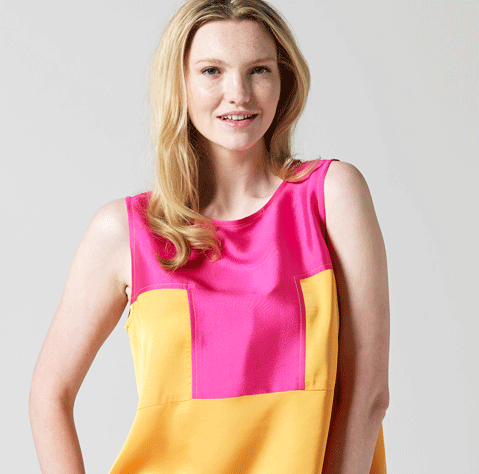This blog post is to show you how I create my lounge pant pattern "Bec" from start to finish.
I am always running around, finding fabric, sewing and working. Thats why I designed a pair of pants that I can wear almost anywhere, and thats why I call them lounge pants as well.
For me lounge pants are meant to be comfortable, with a clean silhouette that can be made in crazy printed fabric or more subdued, simple fabric.
I have already made this pattern in multiple types of fabric. The one the model is wearing which is a woven mid-weight jaquard, the one I made in my video which is a light-wieight woven (leopard print) silk and I have also made them in a woven cotton/elastane, created in a 3/4 length for an ath-leisure aesthetic. I absolutely love all three.
BEC
Lounge Pant Pattern
* All of the PDF sewing patterns are suitable for both US letter and A4 paper. Perfect for all sewers to sew anywhere in the world. I am trying to make sewing fun and convientant for everyone. This pattern also comes with a A0 file for professional printing.
FABRIC
I recommend for this pattern to use a light-weight to mid-weight fabric. You can use either woven or knit but please make sure when choosing a knit fabric it isn't too stretchy; that it has some stability in the fabric. Take note that the pattern will sit differently if made in a knit.
For this pattern the width of the fabric needs to be at least 150cm in width to fit. The length will vary depending on your size and is listed in the sewing guide once downloaded.
This pattern can be made in either natural or synthetic fibres. You can choose to make it from a wool blend, cotton, silk or linen. The other options you can choose are fabrics such as a rayon, viscose or a poly cotton.
TRIMMINGS
For this pattern its requires 5cm width elastic for the waistband.
EQUIPMENT
To print your PDF Pattern
Printer, Paper Scissors, Sticky Tape, Coloured Marker (optional)
To sew this PDF Pattern
Sewing Machine, Normal machine foot, Zipper Foot, Fabric marker ,Fabric Scissors, Pins, Measuring Tape, Matching Thread, Thread cutters (optional), Iron
TIME TO SEW
STEP 1. Assemble your PDF Pattern, printing your first page and measuring the test square.
STEP 2. Prepare your fabric by folding the selvages together. Iron the fold line.
STEP 3. Before you remove your pattern pieces make sure to cut all the notches.
SIDE SEAMS
STEP 1. Seperate Pattern pieces and place your front and back together (right sides together). Pin in place making sure all notices match up.

STEP 2. Sew the side seams together using a 1.5cm / 5'8" inch seam allowance. Back tack at the start and at the end of your stitching line, removing the pins as you sew.


STEP 3. Do the same process to the other side of your pants and cut all loose threads.
STEP 4. Pin your inner leg seam, matching all the notches together.

STEP 5. Sew the side seams together using a 1.5cm / 5'8" inch seam allowance. Back tack at the start and at the end of your stitching line, removing the pins as you sew.
CREATING YOUR POCKET BAG
STEP 1. Lay your pants flat on the table. Using your measuring tape and the fabrics marker, line your tape up to both side seams of your pocket. Measure up 12cm and draw your stitching line in place.

STEP 2. Sew a straight stitch following the marker to create your pocket bag. Ensure to back tack at the start and at the end of your stitching line.
STEP 3. Cut all loose threads.

THE CROTCH
STEP 1. Pull one leg right way up and slide it in the other one. Match up you inner leg seam with one another and pin. Pin along the crotch matching all the notches.

STEP 2. Sew in place with a 1.5 cm/5'8" inch seam allowance. Remove the pins as you sew.
STEP 3. Pull the leg out from the other and check your seam to make sure the inner leg seams are matching nicely/ Cut all loose threads.

CREATING YOUR WAISTBAND
I highly recommend watching the Youtube Video for reference.
STEP 1. Measure your elastic around your waist until it is comfortable. mark it and cut it with a 2cm/1 inch overlay.
STEP 2. Pin the elastic with the overlay. Sew a box with a cross in the centre to secure the elastic, ready for your waistband.

STEP 3. Measure the top of yours pant, make sure that it is laying flat on your table to get the correct measurement. You need to find the circumference of the top of your pants to create your casing.

STEP 4. To create the elastic casing, get your left over fabric and lay it on the fold. Using your measurement of the top of the pant measure from the fold inward and pin to mark the length of your casing. Make sure to add extra 1.5cm/5'8" of an inch for seam allowance.
STEP 5. WIDTH OF CASING. your elastic width should be 5cm, if it is smaller or larger in width make sure that the fabric casing fits accordingly. For eg. Width of elastic x 2 + seam allowance = width of casing
Seam allowance is 1.5cm/5'8" of an inch. If you are using 5cm elastic the total of your casing width will be 13cm. Take note that you will be folding the waist casing in half to sandwich the elastic inside.
STEP 6. Pin along the fabric to secure so fabric does not slide around. Cut out the fabric and remove the pins. Fold in half the other way, pin and sew it together making sure to back tack at the start and at the end. Seam allowance is 1.5cm/5'8" of an inch.
STEP 7. Iron seam allowance open. Once you have done that fold the casing in half and iron once more. Place the elastic inside the casing and pin around making sure not to catch the elastic. This Will create the fabric to bunch up.

STEP 8. Sew incasing the elastic inside. Remove the pins as you sew.

ATTACHING YOUR WAISTBAND
STEP 1. With right sides together pin the waistband onto the top of the pant matching up the centre back with seam allowance together. Fold waistband in half to find the centre front and pin the centre front of the the pant and the same with the side seams.
STEP 2. Change your machine foot to an invisible zipper foot so you can sew right up close to the edge of the elastic. Sew the waistband on removing the pins as you sew.
STEP 3. To make it invisible turn the elastic waistband inside the pant and ditch stitch at the centre back and centre front to keep the elastic from rolling up. Cut all loose thread.
THE HEM
STEP 1. Turn your pants inside out. Using your measuring tape fold the hem up 3cm and pin in place. Iron before you sew to help stabilise the fabric.
STEP 2. Sew a straight stitch, back tacking at the start and at the end. Remove the pins as you sew.

WATCH & LEARN
Sewing can get a little complicated at times, thats why I have also have created a step-by-step sewing tutorial for your to follow along and create these pants with me.
Happy sewing! xx
Georgina




